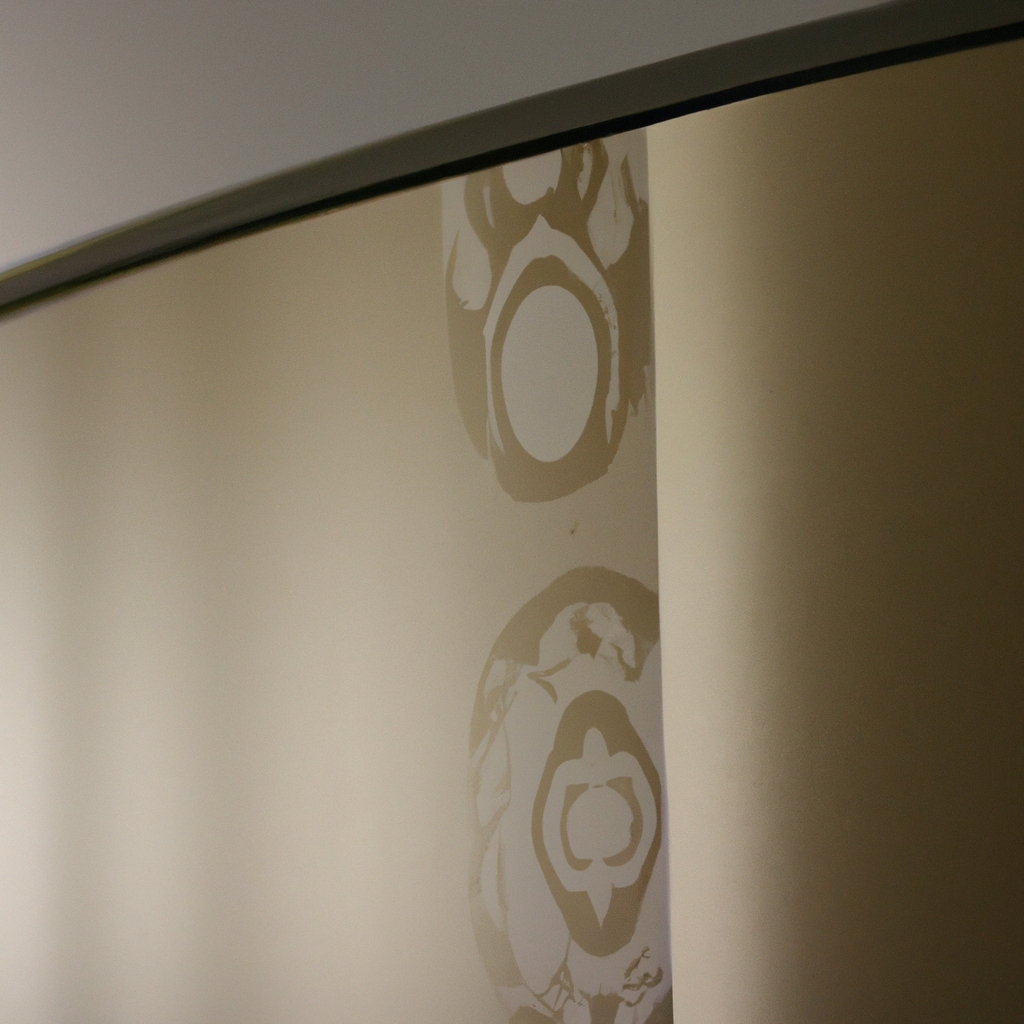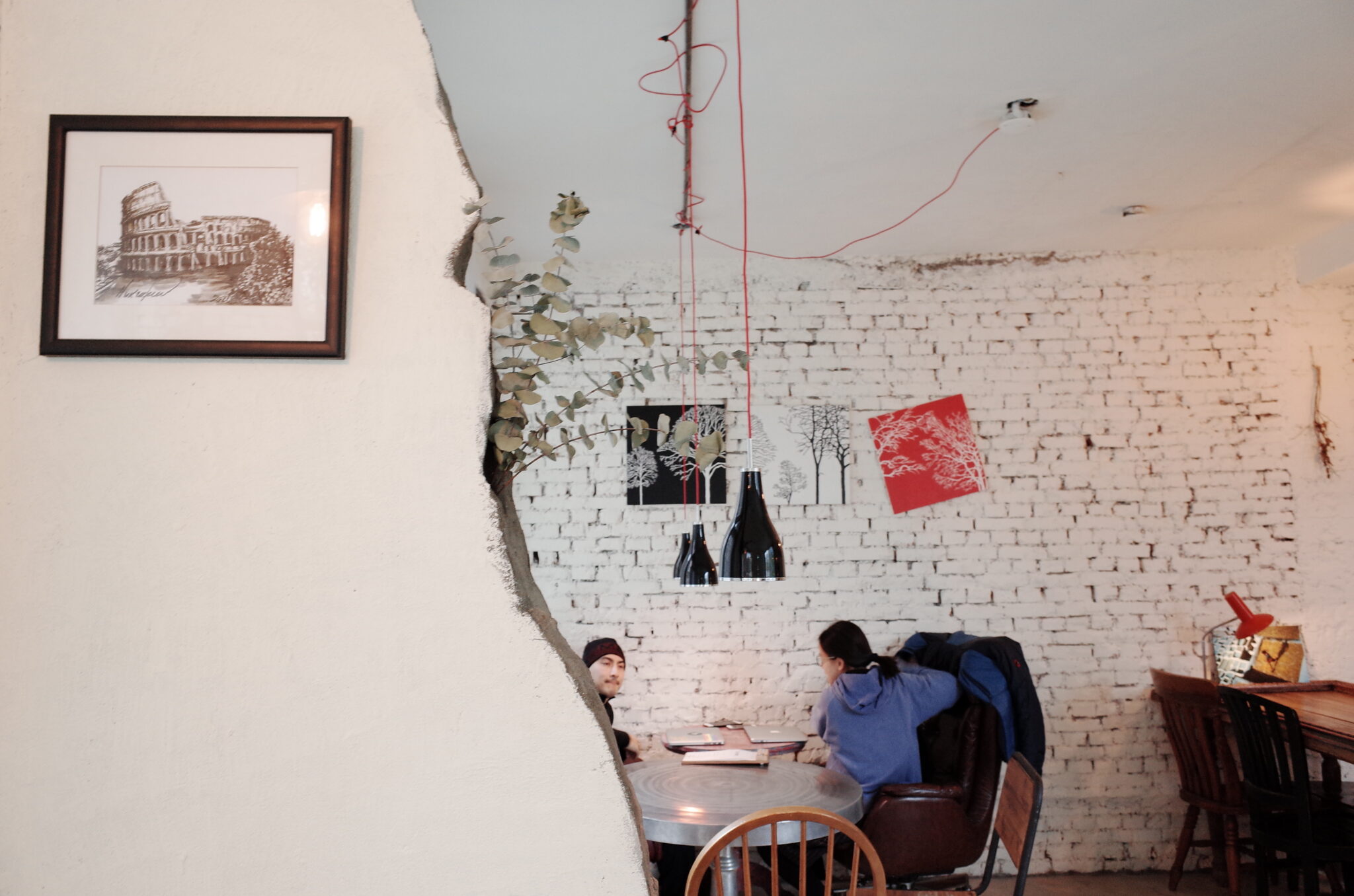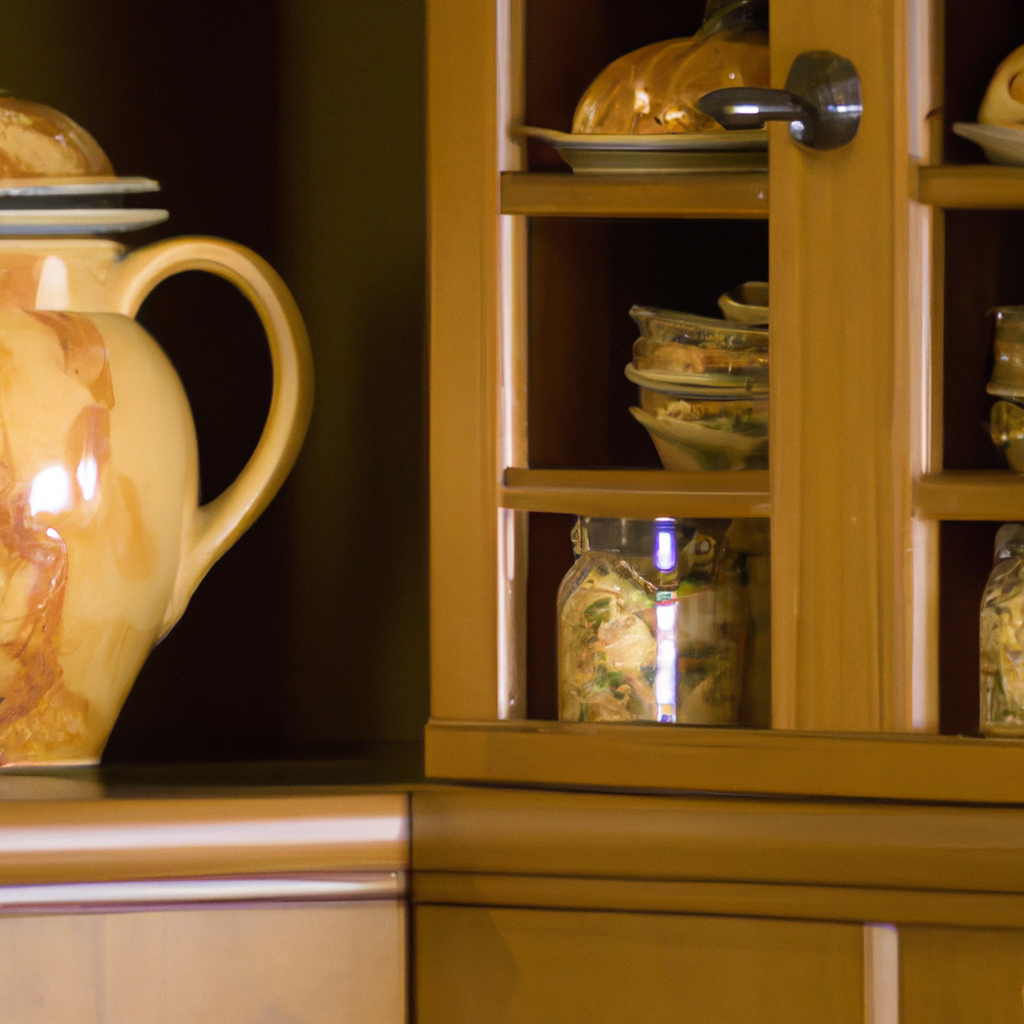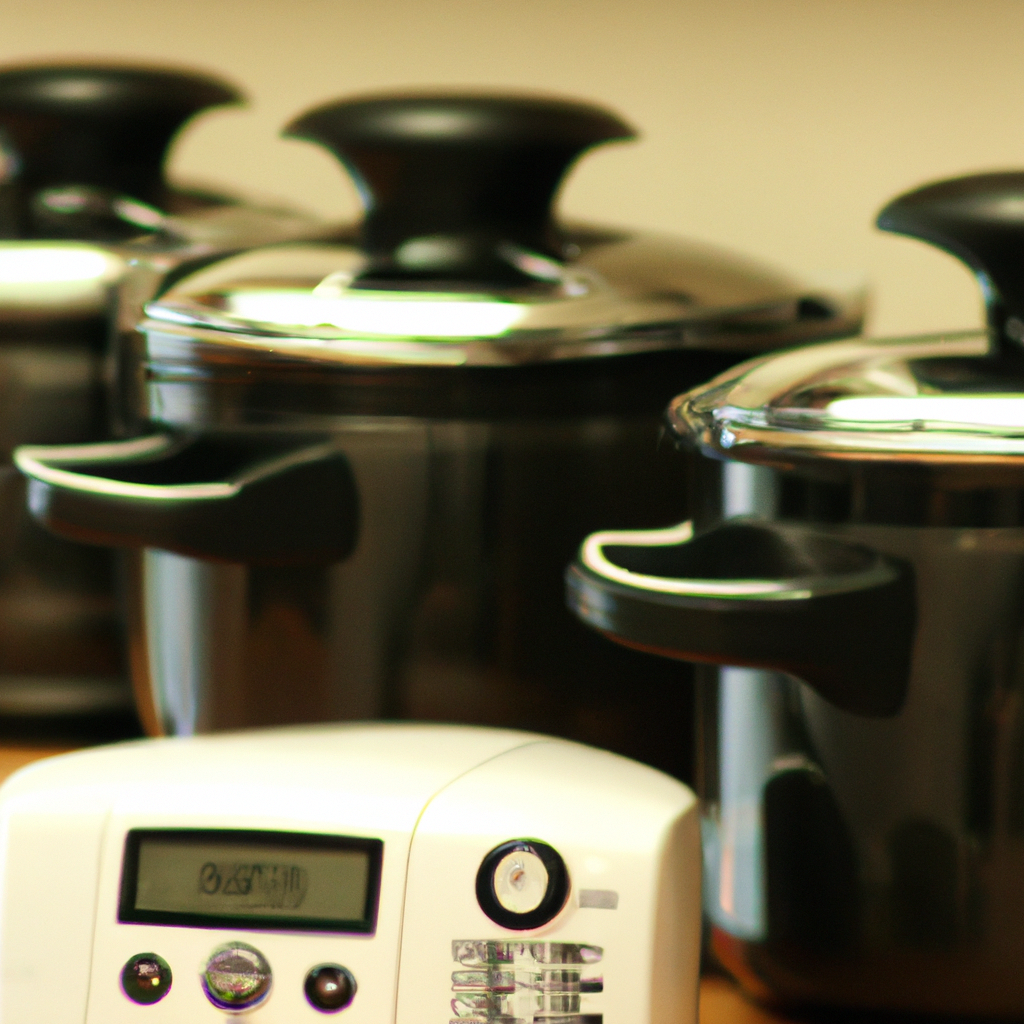Key Takeaway:
- Consider the style of your kitchen when choosing wallpaper: The wallpaper should complement the existing design elements and color scheme. If your kitchen has a modern feel, opt for a bold, graphic print. For a more traditional look, choose a subtle pattern or floral design.
- Choose a wallpaper that is durable and easy to clean: Kitchens are high-traffic areas prone to spills and splatters, so it’s important to select a wallpaper that is washable and can withstand a bit of wear and tear. Vinyl-coated wallpaper is an ideal choice for kitchens.
- Use wallpaper strategically: Wallpaper can be used to create a focal point in a kitchen or to enhance an existing feature such as a backsplash or pantry door. Be mindful of scale and placement when selecting and installing wallpaper, and consider hiring a professional if necessary.
Want to give your kitchen a stylish touch? Wallpaper is the answer! It will bring life and character to an otherwise dull kitchen. Here are some tips to help you choose the perfect wallpaper for your kitchen decor.
Introduction to Wallpaper in the Kitchen
Wallpaper is an amazing material that can pump up any kitchen design with color, pattern, and character. It may require more time and money compared to painting, but it offers durability and wear resistance that can withstand the lifestyle and moisture of the kitchen.
When choosing, think hard materials like tile, stone, or metals or soft materials like grasscloths. Vinyl finishes are a popular choice for their scrubbable and easily cleaned qualities. Novamura offers washable wallpaper options that are perfect for high-traffic areas like the backsplash.
When installing wallpaper, use a primer for better adhesion. Hire a professional for proper installation techniques and proper supplies. Wallpaper myths like peeling, bubbling, or fading can be prevented.
Popular designs for the kitchen include blooming florals, geometric small scale prints, organic motifs, trellis designs, and blue tones like Schumacher’s Belvedere or Cole and Sons Nuvolette. They can complement pale blue cabinets, quartz countertops, marble subway tile, natural woven window shades, and even wall-mounted poppies. Incorporating wallpaper into the kitchen can be a fun and unique way to add style and charm. If you have the right preparation and supplies, it can be a do-it-yourself project.
Choosing the Right Wallpaper Type for Your Kitchen
Choosing the right wallpaper for your kitchen design can be a daunting task. This section will break down the process into three sub-sections, providing helpful tips and considerations along the way.
First, we will explore how to consider the color scheme and style of your kitchen when selecting a wallpaper type.
Next, we will discuss how to determine the type of wallpaper material that will best fit your kitchen’s needs.
Finally, we will give insight into how to choose a wallpaper design that will complement your kitchen’s overall aesthetic. By the end of this section, you’ll be equipped with the knowledge and confidence to incorporate wallpaper into your kitchen design.
Consider the Color Scheme and Style
When it comes to kitchen wallpaper, consider the color and style of your space. A cohesive design can tie the room together. Here are some factors to remember:
- Application: Walls, cabinet backs, open shelving, accent walls, or even glass cabinet fronts.
- Cost: Varies depending on the type of wallpaper and pro installer.
- Versatility: Highly customizable. Create faux paint finishes, textured designs, or natural wall coverings.
- Preparation: Remove any existing finish, fill imperfections with spackle, prime paint, and pick the right adhesive.
- Finish variation: Differing gloss and sheen levels.
- Wallpaper tech: Vinyl wallpapers are more durable and easy to clean.
- Statement wall: Small kitchen or limited wall space? Make a statement.
- Color scheme: Pick a color that compliments your kitchen.
- Use recommendations: Logan Killen Interiors suggest backsplash wallpaper. Schumacher’s Belvedere has patterns and textures. Use primer for smooth application.
- Unexpected placements: Inside cabinets and drawers, ceiling, or high ceiling kitchen.
Pro tip: Start with a small area and add interest and personality to your design.
Determine the Type of Wallpaper Material to Use
Choosing the right wallpaper for your kitchen is essential. Consider wear and tear, budget, and installation time. Textured paint is a great base coat for DIY installation. Schumacher’s Belvedere is easy to install and grease-resistant. For a daring look, use grey and green color palettes. Clean and smooth walls are important before installation. Install on backsplash or shelves for best results. Consider hiring a professional for a seamless finish. Get inspiration from Better Homes & Gardens, Decorated Life, and Elle Decor.
Select a Design that Compliments Your Kitchen’s Aesthetic
Pick wallpaper for your kitchen carefully. It should match the kitchen’s style. Removing old wallpaper can be hard and damaging. Prime walls first. Get ideas from magazines like Better Homes and Gardens or House Beautiful. Schumacher’s Belvedere is durable and eco-friendly. There’s wallpaper in lots of colours and patterns. Install it yourself or hire a professional. It’s fun to choose wallpaper and it will transform your kitchen.
Preparing Your Kitchen Walls for Wallpaper Installation
Before you begin the exciting process of adding wallpaper to your kitchen, it is essential to prepare your walls thoroughly. In this section, we’ll explore the steps required to get your kitchen walls ready for the new wallpaper installation. Specifically, we will be discussing three sub-sections related to preparing your kitchen walls for a seamless wallpaper application. These sub-sections are:
- Removing old wallpaper or paint
- Thoroughly cleaning the walls
- Filling any imperfections in the walls
By tackling these steps in advance, you can ensure a beautiful and long-lasting wallpaper display in your kitchen.


Image credits: ubuy.com.
Removing Old Wallpaper or Paint
To install wallpaper in your kitchen, you must first get rid of the old paint or wallpaper. It can take a few hours to several days, depending on the wall’s condition and type of wallpaper. Here are the steps to follow:
- Strip away wallpaper with tools or chemicals. Read the instructions when using chemicals and always wear protective gear.
- Sand walls if needed for a smoother look.
- Paint primer on the walls. Let it dry completely. This will help the wallpaper stick better.
- Measure the kitchen walls and calculate how many rolls of wallpaper you will need taking into account any openings or cabinets.
- Pick the right wallpaper. There are many modern options available like Schumacher’s Belvedere.
- Hire a professional installer or opt to do it yourself.
- If adding wallpaper to the backsplash area, use wallpaper primer for a better bond with the backsplash surface.
Proper preparation can save on installation costs. Wallpaper is a great way to add color or design to any kitchen.
Cleaning the Walls Thoroughly
Preparing your kitchen walls for wallpaper installation requires thorough wall cleaning. Follow these steps for best results:
- Step #1: Use stripping tools to remove any previous wallpaper.
- Step #2: Scrub walls with a solution of warm water and mild dish soap, using a soft sponge or cloth.
- Step #3: Rinse walls with fresh water, using a clean cloth or sponge.
- Step #4: Allow walls to dry completely for a few hours.
- Step #5: If necessary, apply a coat of primer paint on the walls. This will help the wallpaper adhere better and hide any imperfections.
- Step #6: Choose wallpaper that complements your kitchen project and decorating goals. Consider natural wallcoverings for eco-friendly projects or detailed and colorful wallpapers like Schumacher’s Belvedere, which incorporates the latest technology.
By taking these steps and being vigilant during the cleaning process, you can ensure your kitchen wallpaper looks its best and lasts as long as possible.
Filling in Wall Imperfections
Before you install wallpaper in your kitchen, it is important to fill in wall flaws. How long this takes depends on the type and amount of flaws. Before you start, make sure to take off all old wallpaper or wall coverings.
There are many types of wallpaper to pick from for your kitchen, such as Schumacher’s Belvedere. It is strong, like vinyl, and delicate like linen, all thanks to modern wallpaper technology.
First, you need to ready the walls. Fill holes and sand the surface. Get rid of all trace of dust and dirt. Filling in wall flaws is essential to have a great-looking kitchen wallpaper.
With the right tools and some patience, you can make wallpaper work in your kitchen. You will have a good-looking and inviting space.
Installing Wallpaper in Your Kitchen
Wallpaper is a versatile design element that can add depth and texture to a room, including the kitchen. In this section, we will explore the process of installing wallpaper in your kitchen, from measuring and cutting the wallpaper to hanging it on your walls. We will review the tools you need for the job and offer tips for applying wallpaper adhesive. Whether you’re a seasoned DIYer or a first-timer to wallpaper installation, this guide will give you the confidence and skills to transform your kitchen with this unique design element.
Measuring and Cutting the Wallpaper
Before installing wallpaper, measure and cut it right for a seamless finish in your kitchen. Here’s how to do it:
- Measure the walls’ length and width. Don’t forget windows and doors.
- Add 2 inches to the height and width measurements.
- Use a level and pencil to draw a straight line on the wall.
- Cut the wallpaper into smaller pieces with scissors or a knife.
- Cover one section at a time with wallpaper paste. Make sure it’s evenly spread.
- Align the wallpaper with the drawn line. Get rid of air bubbles and wrinkles.
- Use a wallpaper smoother to press the wallpaper onto the wall. Start from the center then work outward.
- Repeat this with other sections. Match up the patterns.
Go for Schumacher’s Belvedere collection for stunning and lasting wallpaper. Peel off existing wallpaper before starting this project.

Applying Wallpaper Adhesive
When applying wallpaper adhesive, it is very important for the wallpaper to stay put for a long time. To start, take off all old wallpaper and make sure the walls are clean and dry. This process may take 1-2 days, depending on the size of the wall and how much wallpaper needs to be taken off. Here are the steps to apply the wallpaper adhesive:
- Put adhesive on the back of the wallpaper using a paint roller.
- Begin from the top of the wall and move downwards, getting rid of any air bubbles.
- Use a wallpaper smoothing brush or plastic smoothing tool to remove wrinkles or bubbles.
- Let the wallpaper dry completely before you trim off any extra material around the edges.
Schumacher’s Belvedere is a great wallpaper brand, especially for those new to home decorating and do-it-yourself projects. They have a huge selection of styles, colors, and patterns. With the right adhesive and tools, you can easily add personality and style to your kitchen.
Hanging the Wallpaper
Transform your kitchen space easily and cost-effectively with wallpaper! Here’s how:
- Remove previous wallpaper and adhesive, and make sure the surface is smooth.
- Measure the walls and cut strips, adding a few inches for full coverage.
- Use a straightedge and pencil for a plumb line, as a guide when hanging.
- Apply adhesive to the back of the strips and align along the line.
- Brush away air bubbles and wrinkles, starting from the middle.
Get creative with Schumacher’s Belvedere design and metallic finish! With these steps, you can add personality and style to your kitchen.
Maintenance and Care for Wallpaper in Your Kitchen
Wallpaper is a beautiful and unique way to add personality to your kitchen design. However, it’s crucial to properly maintain and care for your wallpapered walls to ensure that they maintain their beauty and integrity.
In this section, we will explore the essential tasks involved in maintaining and caring for wallpaper in your kitchen. We will break down these tasks into two sub-sections:
- Cleaning and wiping down wallpapered walls: To maintain the beauty of your wallpapered walls, it’s essential to clean and wipe them down regularly. You can use a soft cloth or sponge and a mild cleaning solution to gently wipe away any dust, dirt, or stains. Avoid using abrasive cleaners or scrub brushes that can damage the wallpaper surface. Make sure to dry the walls completely after cleaning to prevent moisture damage.
- Addressing any wallpaper damage or peeling: Even with proper care, wallpapered walls can sometimes get damaged or start peeling. It’s important to address these issues promptly to prevent further damage. You can use wallpaper glue to reattach any peeling edges and smooth out any air bubbles. For larger tears or holes, you may need to replace the damaged section of wallpaper.
By following these simple steps, you can prevent damage and prolong the life of your kitchen wallpaper.
Cleaning and Wiping Down Wallpapered Walls
Caring for and maintaining wallpapered walls is essential, especially in high-traffic areas like the kitchen. Here’s how:
- Start by dusting the walls with a soft cloth or brush to remove any loose dust and debris.
- Add a few drops of mild dish soap or wallpaper cleaning solution to a clean bucket of warm water. Be careful not to use too much detergent as it can damage the wallpaper.
- Dampen a clean sponge or soft cloth in the cleaning solution. Wring it out and start wiping down the walls. Do small sections, starting from the top and working downwards to avoid streaks.
- Rinse the sponge or cloth in clean water often to stop dirt or grime from spreading. Change the cleaning solution if it’s cloudy.
- Finish by patting the walls dry with a clean, dry cloth. Don’t rub too hard and damage the wallpaper.
Removal or intensive cleaning of wallpaper should be left to experts. Doing it yourself can lead to damage and extra costs. If you’re thinking of incorporating wallpaper into your kitchen design, consider Schumacher’s Belvedere, a well-known and reputable name in the industry.
By following these steps, you can keep your wallpaper in excellent condition and add style and personality to your kitchen.
Addressing Any Wallpaper Damage or Peeling
Addressing any wallpaper damage or peeling is key for maintaining wallpaper in the kitchen. It is essential to stop damage and peeling.
Assess the extent first. Prepare the wall by making sure it is smooth, by taking off any loose wallpaper.
Schumacher’s Belvedere wallpaper is a great choice as it has various colors and patterns. It fits any kitchen design.
If you wish to do a DIY project, use a wallpaper removal solution and a scraper to take off the existing wallpaper. The process can take a few hours, depending on the size of the wall and the amount of wallpaper. When it is off, install your new wallpaper.
With proper care and maintenance, wallpaper can make your kitchen look good for years. Adding facts and figures emphasizes the importance of dealing with wallpaper damage, and explains wallpaper maintenance better.
Conclusion and Final Tips for Incorporating Wallpaper in Your Kitchen
Incorporate wallpaper into your kitchen design! It’s an easy and affordable way to spruce up the space. Plan and prep the wall first. Here are some last hints & tips:
- Select a design that co-ordinates with the kitchen’s colour & style, e.g. Schumacher’s Belvedere pattern.
- Measure the walls to estimate how much wallpaper you’ll need.
- Use non-permanent wallpaper if you’re unsure about committing long-term.
- Ventilate the kitchen during application, especially when using adhesive.
- Removing wallpaper can be tricky – only attempt it if you have experience.
- Allow enough preparation for the wall prior to applying wallpaper (sanding, cleaning, filling holes).
- Buy good quality wallpaper & adhesive materials for lasting results.
Now you’re ready to decorate your kitchen with wallpaper like a pro!
Five Facts About How to Incorporate Wallpaper into Your Kitchen Design:
- ✅ Wallpaper can add color, texture, and pattern to your kitchen design. (Source: HGTV)
- ✅ Consider using wallpaper as a focal point, such as on a statement wall or the backsplash area. (Source: Real Simple)
- ✅ Peel-and-stick wallpaper is a great option for rental kitchens or those who want a temporary design change. (Source: Country Living)
- ✅ Choose a wallpaper pattern that complements or contrasts with your existing kitchen features, such as cabinets, countertops, and fixtures. (Source: Better Homes and Gardens)
- ✅ Wallpaper can be used in small doses, such as on the inside of shelving or on the ceiling, to add a touch of design without overwhelming the space. (Source: House Beautiful)
FAQs about How to Incorporate Wallpaper into Your Kitchen Design
1. What is the preparation time for incorporating wallpaper into my kitchen design?
The preparation time for incorporating wallpaper into your kitchen design may depend on the amount of work that needs to be done. It typically takes 1-2 days to properly clean and prime your walls before wallpapering.
2. Can I do this as a DIY project?
Yes, you can do this as a DIY project; incorporating wallpaper into your kitchen design can be fun and rewarding. However, be sure to read and follow the manufacturer’s instructions carefully to ensure a successful installation.
3. What type of wallpaper is best for the kitchen?
The type of wallpaper that is best for the kitchen is Schumacher’s Belvedere, because it is a great option for kitchen wallpaper. It is durable and easy to clean, making it ideal for high-traffic areas like the kitchen. Additionally, it comes in a variety of patterns and colors to suit any design style. However, we can choose our own type of wallpaper, as long as it is durable and conducive.
4. Can I use wallpaper on just one wall in my kitchen?
Yes, you can use wallpaper on just one wall in your kitchen. Incorporating wallpaper on just one wall in your kitchen, which is a popular design trend, can add visual interest and depth to your kitchen design.
5. Can I remove the wallpaper easily if I change my mind?
Yes, you can easily remove the wallpaper if you change your mind; however, most wallpapers are removable. Some may be more difficult to remove than others, so be sure to choose a wallpaper that is easily removable if you think you may want to switch up the design in the future.
6. Do I need to hire a professional to incorporate wallpaper into my kitchen design?
Yes, if you need to, you can hire a professional to incorporate wallpaper into your kitchen design. However, if you feel uncomfortable tackling the project yourself, hiring a professional can ensure a proper installation and save you time and potential frustration.



